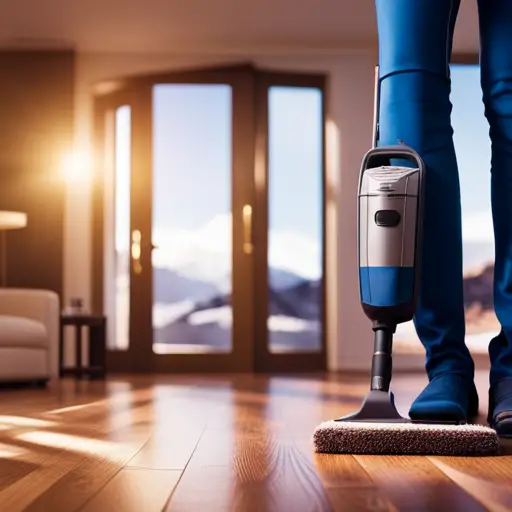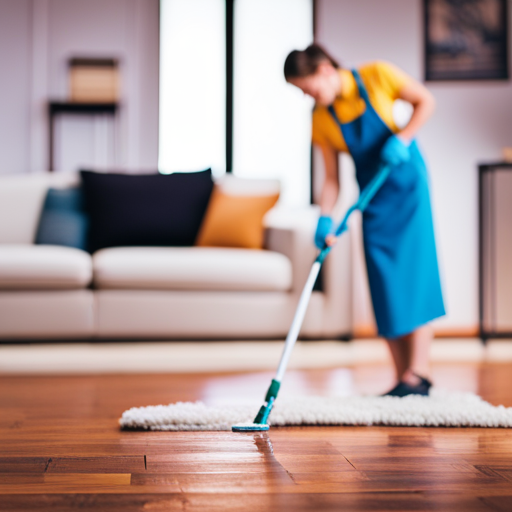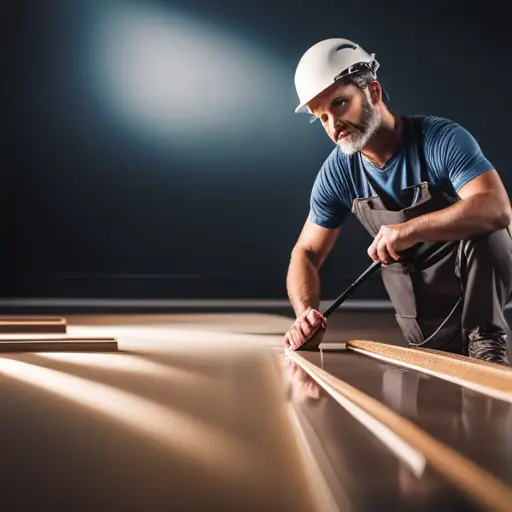Preventing Water Damage on Bathroom Floors

‘An ounce of prevention is worth a pound of cure, especially when it comes to safeguarding bathroom floors against water damage.
This comprehensive guide offers practical insights and solutions for addressing the common causes of water damage, emphasizing the importance of regular maintenance, effective waterproofing methods, and strategic moisture management.
From choosing water-resistant flooring materials to implementing long-term prevention techniques, this article equips readers with the knowledge to proactively protect their bathroom floors from potential water-related issues.’
Common Causes of Bathroom Floor Water Damage
The most common cause of water damage on bathroom floors is leaking or damaged plumbing fixtures. These fixtures include sinks, toilets, showers, and bathtubs. Over time, the seals and pipes of these fixtures can deteriorate, leading to leaks that result in water damage on the bathroom floor.
Leak detection is crucial in identifying and addressing these issues promptly. Regular inspections and maintenance can help prevent such leaks and subsequent damage.
Additionally, inadequate or faulty drainage systems can contribute to water damage on bathroom floors. If the water from the shower, sink, or bathtub does not drain properly, it can accumulate on the floor, causing damage over time. Ensuring that drainage systems are functioning effectively is essential in preventing water damage.
Proper installation and regular maintenance of drainage systems can mitigate the risk of water accumulating on the bathroom floor and causing damage.
Importance of Regular Inspection and Maintenance
Regular inspection and maintenance are crucial in preventing water damage on bathroom floors. By conducting regular inspections, potential issues can be identified early and addressed promptly, preventing costly damage.
Additionally, consistent maintenance ensures that the floor remains durable and able to withstand the rigors of daily use.
Regular Inspections Prevent Damage
Routine inspections and maintenance are essential for preventing water damage on bathroom floors. By conducting regular checks, homeowners can identify potential issues before they escalate, ultimately saving time and money.
Early detection techniques such as checking for leaks around the toilet, sink, and shower, as well as inspecting grout and caulk for signs of wear and tear, can help in preventing damage. Additionally, examining the flooring for any warping or discoloration can signal underlying water damage.
These simple yet crucial maintenance tasks can significantly reduce the risk of extensive water damage in the bathroom. Therefore, it is imperative to incorporate regular inspections into the home maintenance routine to ensure the longevity and integrity of bathroom floors.
Maintenance Ensures Floor Durability
To maintain the durability of bathroom floors, homeowners must prioritize regular inspections and maintenance as crucial measures for preventing water damage. Floor sealing and leak detection are essential components of a proactive maintenance plan. Regularly inspecting the floor for any signs of wear, water damage, or deteriorating sealant can help identify and address potential issues before they escalate. Additionally, ensuring that the floor is properly sealed can significantly reduce the risk of water seepage and damage. Implementing a schedule for resealing the floor as needed, based on the type of flooring material, is vital for long-term durability. Leak detection should also be a part of regular maintenance to identify and repair any plumbing issues that could compromise the integrity of the bathroom floor.
| Maintenance Task | Frequency | Additional Notes |
|---|---|---|
| Floor Sealing | As needed | Depends on floor material and usage |
| Leak Detection | Biannually | Check for plumbing issues regularly |
Effective Waterproofing Solutions for Bathroom Floors
Effective waterproofing solutions for bathroom floors are essential to prevent water damage and maintain the integrity of the flooring. To achieve this, consider the following waterproofing techniques and proper drainage solutions:
-
Waterproof Membranes: Applying a waterproof membrane beneath the tile or flooring can effectively prevent water from seeping through the surface and causing damage to the subfloor.
-
Grout Sealing: Properly sealing the grout lines between tiles is crucial for preventing water from penetrating through the gaps and reaching the subfloor.
-
Sloping Floors: Ensuring that the bathroom floor is properly sloped towards the drain can help direct water flow and prevent pooling, thus reducing the risk of water damage.
-
Waterproof Underlayment: Using a waterproof underlayment beneath the flooring material can provide an additional layer of protection against water infiltration.
Implementing these waterproofing solutions can significantly reduce the chances of water damage to bathroom floors.
Once the waterproofing is in place, the next step is choosing water-resistant flooring materials.
Choosing Water-Resistant Flooring Materials
When it comes to preventing water damage on bathroom floors, choosing the right water-resistant flooring materials is crucial.
The best water-resistant flooring options can help to safeguard against water damage and mold growth.
Additionally, it’s important to implement proper maintenance tips to ensure the longevity and effectiveness of the chosen flooring materials.
Best Water-Resistant Flooring
Water-resistant flooring materials are essential for maintaining the integrity of bathroom floors, particularly in high-moisture environments. When choosing water-resistant flooring options, it’s important to consider various moisture management strategies. Here are some of the best water-resistant flooring materials to consider:
-
Porcelain or Ceramic Tile: These materials are highly water-resistant and durable, making them an ideal choice for bathroom floors.
-
Vinyl: Waterproof vinyl flooring is available, offering a cost-effective and resilient option for moisture-prone areas.
-
Stone: Natural stone, such as slate or granite, provides a beautiful and water-resistant flooring solution for bathrooms.
-
Engineered Wood: Engineered wood with a waterproof core can offer the warmth and aesthetic of wood while being water-resistant.
Carefully selecting water-resistant flooring materials can effectively safeguard bathroom floors against water damage, ensuring longevity and minimizing maintenance requirements.
Maintenance Tips for Longevity
To ensure the longevity of water-resistant flooring materials in bathrooms, it is imperative to regularly inspect and maintain their integrity, thereby preventing potential water damage and minimizing the need for extensive repairs.
Cleaning techniques play a crucial role in maintaining water-resistant flooring. Regular cleaning with mild, non-abrasive cleaners helps to prevent the buildup of grime and mold that can compromise the water-resistant properties of the flooring.
Additionally, moisture management is essential for preserving the integrity of water-resistant materials. Promptly addressing any water spills and ensuring proper ventilation in the bathroom can prevent excess moisture from seeping into the flooring.
Proper Installation Techniques for Bathroom Fixtures
The proper installation of bathroom fixtures is crucial to preventing water damage on bathroom floors. When installing bathroom fixtures, it is essential to employ proper waterproofing techniques to ensure the longevity and functionality of the fixtures.
Here are some key considerations for the proper installation of bathroom fixtures:
-
Waterproofing Membrane: Utilize a waterproofing membrane to protect the subfloor and surrounding areas from water damage. This membrane acts as a barrier, preventing water from seeping into the subfloor and causing structural damage.
-
Seam Sealing: Properly seal seams and joints to prevent water penetration. This includes sealing around the base of toilets, bathtubs, and shower enclosures to prevent water from seeping into the subfloor.
-
Correct Drain Installation: Ensure that drains are installed correctly and are properly sealed to prevent leaks. Proper installation of drains is crucial in preventing water from accumulating under fixtures and causing damage over time.
-
Professional Installation: Consider hiring a professional for the installation of bathroom fixtures, especially for complex installations such as shower systems. Professionals have the expertise to ensure that fixtures are installed correctly and securely.
Strategies for Managing Moisture and Humidity
Implementing effective moisture and humidity management is essential for preserving the integrity of bathroom floors and fixtures. To prevent water damage and mold growth, it is crucial to employ strategies that control moisture levels and promote proper ventilation. Utilizing dehumidifiers and implementing proper ventilation methods are key in managing moisture and humidity in bathrooms. Dehumidifiers help reduce excess moisture in the air, while ventilation methods such as installing exhaust fans and opening windows facilitate air circulation, preventing the buildup of humidity.
In addition to managing moisture levels, ensuring that grout is waterproof and employing sealing techniques are vital for maintaining bathroom floors. Waterproof grout helps to prevent water from seeping into the floors and causing damage, while sealing techniques create an additional layer of protection against moisture. This combination of strategies helps to safeguard bathroom floors and fixtures from water damage and the harmful effects of high humidity.
| Moisture and Humidity Management Strategies | Description |
|---|---|
| Dehumidifier Usage | Reduces excess moisture in the air. |
| Ventilation Methods | Facilitates air circulation to prevent humidity buildup. |
| Waterproof Grout | Prevents water seepage into floors. |
| Sealing Techniques | Adds an extra layer of protection against moisture. |
Quick Fixes for Small Bathroom Floor Leaks
If you notice a small bathroom floor leak, you can quickly address it by applying waterproof sealant to the affected area. This can help prevent further water damage and buy you some time until a more permanent solution can be implemented.
Here are some repair methods and temporary solutions to consider:
-
Waterproof Sealant: Apply waterproof sealant to the specific area where the leak is occurring. This can help prevent further water damage and buy you some time until a more permanent solution can be implemented.
-
Replace Grout: If the leak is due to deteriorating grout, carefully remove the affected grout and replace it with new grout. Ensure that the new grout is properly sealed to prevent future leaks.
-
Use Epoxy Putty: Epoxy putty can be used as a temporary fix for small cracks or holes in the flooring. It provides a quick and waterproof seal, preventing water from seeping through the damaged area.
-
Utilize Waterproof Tape: In some cases, waterproof tape can be used as a temporary solution for small leaks. It can provide a quick fix to stop water from spreading and causing further damage.
These quick fixes can help mitigate the immediate impact of a small bathroom floor leak. However, it’s essential to implement long-term prevention techniques to avoid recurrent issues.
Long-Term Prevention Techniques for Water Damage
One effective long-term prevention technique for water damage on bathroom floors is to install a waterproof membrane beneath the flooring. Waterproofing techniques such as this create a barrier that prevents water from seeping into the subfloor and causing damage over time.
Additionally, incorporating prevention strategies like proper moisture management can significantly contribute to the long-term maintenance of bathroom floors. This includes ensuring that any leaks are promptly repaired, using exhaust fans to reduce humidity levels, and regularly inspecting the caulking and grout around fixtures to maintain their effectiveness.
Long term maintenance also involves resealing grout lines and reapplying waterproof coatings as needed to reinforce the protective layer. By implementing these measures, homeowners can mitigate the risk of water damage to their bathroom floors and extend the longevity of their flooring materials.
Consistent vigilance in maintaining waterproofing systems and managing moisture levels is crucial for preserving the integrity of bathroom floors and preventing costly repairs due to water damage in the long run.
Frequently Asked Questions
Can Water Damage on Bathroom Floors Lead to Mold Growth and Health Issues?
Water damage on bathroom floors can lead to mold growth, posing health risks. Mold prevention involves waterproof flooring and effective sealing techniques. Addressing water damage promptly is crucial for mitigating mold and maintaining a healthy environment.
Are There Any Specific Maintenance Tasks That Should Be Done Seasonally to Prevent Water Damage on Bathroom Floors?
Regular maintenance of bathroom floors is crucial to prevent water damage. Seasonal tasks include checking for leaks, resealing grout and caulk, and inspecting for any signs of water damage. Consistent upkeep ensures long-term durability.
What Are Some Common Signs of Water Damage on Bathroom Floors That Homeowners Should Look Out For?
Common signs of water damage on bathroom floors include discoloration, warping, and mold growth. Homeowners should conduct regular floor inspections, utilizing leakage detection methods and waterproofing techniques to prevent and repair water damage effectively.
How Can I Protect the Grout and Caulk in My Bathroom to Prevent Water Damage?
Proper maintenance of grout and caulk in bathroom spaces is imperative to prevent water damage. Regular grout sealing and caulk maintenance can help preserve the integrity of these crucial barriers, ensuring a watertight environment and prolonging the lifespan of bathroom fixtures.
Are There Any Specific Cleaning Products or Techniques That Can Help Prevent Water Damage on Bathroom Floors?
Cleaning techniques and preventive products are essential for maintaining bathroom floors. Using appropriate cleaning products and techniques helps to prevent water damage, ensuring the longevity and integrity of the flooring materials. Regular maintenance is key.
Conclusion
In conclusion, preventing water damage on bathroom floors is crucial for maintaining the integrity and safety of your home.
Without proper maintenance and waterproofing, the damage caused by water can be catastrophic, leading to costly repairs and potential health hazards.
By taking proactive measures to address potential sources of water damage, you can ensure the longevity and quality of your bathroom floors, saving you from the headache of dealing with water-related issues in the future.

Rubin Everest, a seasoned expert in the world of flooring, brings a wealth of knowledge and passion to the surface. As the mind behind ebbow.com, Rubin is dedicated to sharing insights on the latest trends, innovative solutions, and expert advice in the realm of flooring. Whether you’re seeking practical tips for installation or design inspiration, Rubin Everest is your go-to source for all things flooring-related, making your journey to the perfect floor an informed and enjoyable experience.





